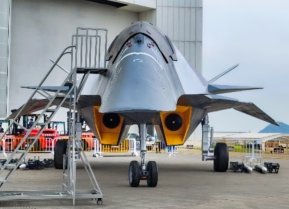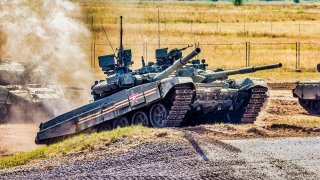Can Russia Rebuild Its Military After the Ukraine War?
The future of the Russian military post-Ukraine war reflects a nuanced reality. Moscow plans significant rearmament, increasing personnel to 1.5 million, adding divisions, and expanding its navy and air force. Benefits include a strengthened defense industry, battle-tested officers, and an adaptive military doctrine. However, demographic challenges, financial constraints, and sanctions on advanced equipment limit these ambitions.
Recent discussion of the future trajectory of the Russian military after the conclusion of Russia’s war against Ukraine has centered on two divergent views. One set of analysts argues that the war in Ukraine will leave the Russian military decimated and lacking in resources. A second set of analysts believes that the war experience will allow Russia to build a military force that is battle-hardened and could be a serious threat to NATO and the United States. The reality, of course, is more nuanced than either of these one-sided perspectives.
The Russia Military Reboot After Ukraine War
The Russian military has announced plans to expand its force structure. Russia’s political leadership believes that it is in the midst of a long-term conflict with the US-led Western alliance, so it needs a strong military to counter NATO forces. Given this geopolitical strategy, there is no question that the Russian government will be willing to spend resources on rearmament, even if this spending brings a cost to other priority areas or the standard of living of Russia’s civilian population.
These rearmament plans include an announced increase in the size of the military from 1.15 to 1.5 million personnel, which is designed to allow the formation of a new army corps, three new motorized rifle divisions and two new air assault divisions, as well as the expansion of seven motorized rifle brigades into motorized rifle divisions and an increase in the size of the navy, air force, and strategic rocket forces. The crucial question is to what extent can the Russian military actually achieve these announced plans.
The Russian military’s rearmament plans benefit from several advantages. On the equipment side, the war has resulted in a major expansion of Russia’s defense industry, with existing factories undergoing expansion and new plants being built in many sectors. Key plants such as Uralvagonzavod and Kurganmashzavod have shifted to around-the-clock production. On the manpower side, the Russian military will have a new generation of battle-tested mid-level and senior officers who will form the new military elite. Finally, the Russian General Staff has a track record of absorbing lessons learned from previous wars and modifying doctrine and TTPs (Tactics, Techniques, and Procedures) to reflect adaptation to evolving technological and tactical innovations.
The Challenges
At the same time, the Russian military’s reconstitution effort will be subject to a number of potentially serious constraints.
Most critically, the Russian military will face severe limitations on potential manpower resources. Russia’s demographic situation will limit the military’s ability to recruit young men for military service in the numbers required to boost the size of the military force to 1.5 million personnel. Russia’s total fertility rate was below 1.4 from 1993 to 2006 and has remained below 1.8 since then. Combined with relatively high death rates among working-age men, the result has been a relative dearth of potential military personnel.
At the same time, the end of active fighting with Ukraine will lead to public pressure to end existing stop-loss programs among contract service members and to allow for the demobilization of troops that have been fighting in Ukraine. Furthermore, Russia’s leadership sees another round of mobilization as politically dangerous and wants to avoid it if at all possible. This will make it difficult to bring in new troops in sufficient numbers to meet the stated military expansion goals.
The constraints on the reconstitution of the Russian military are not limited to manpower. On the financial side, the Russian government will find it very difficult to maintain defense spending at anything close to present-day levels. The current level of defense expenditures, which is close to one-third of the government’s total budget, is causing the economy to overheat with inflation levels of close to ten percent in 2024. The government will have to reduce military expenditures to stabilize the economy and to ensure that domestic priorities receive adequate financing since constraints on domestic funding will be less palatable in peacetime.
Finally, reconstitution will also be limited by constraints on Russia’s defense industry. Efforts at import substitution, i.e. the production of domestic alternatives, of key components, has not been successful. Russian defense industry has found alternative ways to import semiconductors and machine tools, but constraints on the production of the most advanced equipment remain in place. Furthermore, even though it is running at full capacity, Russia’s defense industry has been unable to keep up with the pace of loss of military equipment. Once the war ends, it will take time to rebuild equipment lost in the current war.
To conclude, Russian military reconstitution should be disaggregated into manpower and equipment. On the manpower side, it is virtually impossible for Russia to reach the target size of its military. However, technological and operational innovation means that even with a military that does not reach the 1.5 million staffing target, Russia will be a serious threat in a conflict. And it now has a great deal of experience in finding unusual ways to deal with manpower shortfalls if a war were to break out. On the equipment side, the extent of losses and the impact of continuing sanctions and export controls mean that it will take years for Russia to fully restore equipment lost in its invasion of Ukraine. Nevertheless, over time, Russia will rebuild its military.
Since Russian leadership clearly perceives themselves in a global confrontation with the West, Russia will, therefore, remain a potential threat to its neighbors and the rest of Europe for the foreseeable future.
About the Author:
Dmitry Gorenburg is a Senior Research Scientist in the Russia Studies Program at CNA, a nonprofit research and analysis organization, where he has worked since 2000. Dr. Gorenburg is also an associate at the Harvard University Davis Center for Russian and Eurasian Studies and is the editor of Problems of Post-Communism. He previously served as Executive Director of the American Association of the Advancement of Slavic Studies (AAASS). His research interests include security issues in the former Soviet Union, Russian military reform, Russian foreign policy, and ethnic politics and identity.
Image Credit: Shutterstock.


